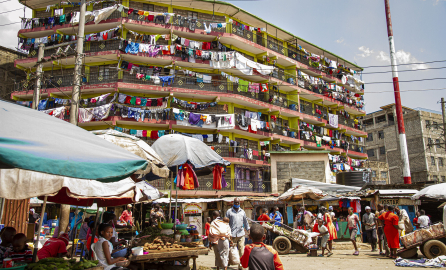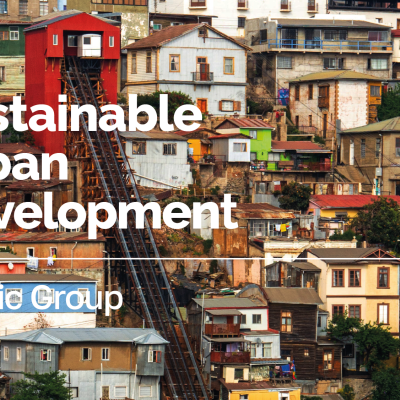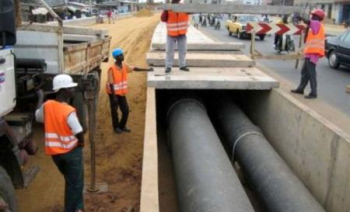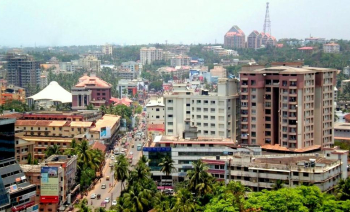Article originally published in the public group Sustainable Urban Development
Rapid urbanisation – experienced by most EU partner countries – is one of the defining mega-trends of the 21st century. By 2050, the urban population is projected to increase by two billion people, mainly in Africa and Asia. This is why the European Consensus on Development stresses the need to focus on cities and local authorities as important actors in achieving the SDGs, including – but limited to – SDG 11 ‘Make cities & human settlements inclusive, safe, resilient and sustainable’.
No country has ever achieved sustained economic growth, rapid social development and gender equality without urbanising.1 The exclusion of large sections of the urban population, such as those living in informal settlements and slums2, ignores human rights conventions and incurs a range of costs (e.g. lost productivity). This undermines sustainable urbanisation, as the full potential of all urban dwellers is not harnessed.
Against this background, INTPA.F4 (Sustainable Transport & Urban Development) – in the framework of the Methodological Knowledge Sharing (MKS) Programme – organised a webinar series on sustainable urban development. The first session – on 17 February 2022 – focused on housing and the upgrading of slums.
|
Lessons learnt from the MKS webinar |
1. A housing affordability crisis contributes to informal housing solutions.
Slum formation has become the predominant form of city growth in many parts of the world. In some regions (e.g. Sub-Saharan Africa, Southern and Western Asia), urbanisation is a synonym of slum formation; and it is worth mentioning that one in four people residing in urban areas lives in slums.
A number of studies3 conducted before the COVID-19 pandemic have shown that (1) homeownership and rental housing are not affordable; (2) the housing sector is highly restricted; and, (3) there are distortions reflected in the spatial structure of cities (e.g. informal housing, slums, overcrowding, high land price, urban sprawl).
The lack of affordable housing leads people with low to moderate incomes to resort to informal housing solutions. This reality propels informal urbanisation and slum formation.
Housing affordability takes into account household income, the house price, and the terms of the finance. Across Africa for example, the combination of low urban household incomes, high mortgage interest rates and short tenors (where these exist) or no finance at all, results in very low housing affordability. There are very few countries in Africa where the cheapest newly built house by a private sector developer is accessible to the majority of the population.4
2. The policy focus has shifted from slum clearance to slum upgrading programmes.
Policies responding to informal urbanisation and the emergence of slums have been put in place. However, policy design and implementation have differed in their conceptualisation and priorities throughout the decades. In the 1970s, policies focused on resettlement, repression, slum clearance and slum eradication through land acquisition, land banking and conventional housing projects. In the 80s, there were efforts for integration to housing policies, while no large-scale programmes were implemented. However, the 90s saw citywide policies with local governments at the forefront. Different approaches were combined, infrastructure and services improved, land tenure legalised and integration into programmes became the new norm.
In total we find four models5 of slum upgrading interventions:
- The clearance and relocation model: Displacement & resettlement of residents elsewhere;
- The urban redevelopment model: Relocation & possible return of residents to original site. Examples of this model are found in Addis Ababa and Mumbai;
- The slum upgrading and restructuring model: Partial relocation of residents to nearby areas (within or outside). Examples of this model are Rio de Janeiro, Medellin, Bissau and Lusaka;
- The conventional slum improvement model: Residents stay where they live with little or no change at all. An example of this model is the Participatory Slum Upgrading Programme.
3. Cities need to be at the forefront of the design and implementation of slum upgrading programmes.
Various slum upgrading programmes have highlighted the importance of decentralisation – revealing the key role that cities and municipalities can play in addition to the action taken at national level. Two such case studies are the Programme Favela-Bairro (PFB) in Rio de Janeiro, Brazil, and the Participatory Slum Upgrading Programme (PSUP) in the ACP countries.6
PFB is a municipality-led intervention which received financial support from the Inter-American Development Bank and had the participation of the private sector. As a citywide intervention, it included horizontal coordination among the different municipal secretariats (e.g. Planning, Housing, Health, etc.) during project management and implementation, as well as the involvement of the local community.
PSUP is a multilateral and multi-country programme focused on advocacy, national strategies and community-led action. It is implemented through five strategic, integrated interventions aimed at:
- Generating evidence-based knowledge on slums and enhancing the capacity of stakeholders to strengthen policies and develop inclusive citywide plans.
- Improving governance and slum upgrading institutions by strengthening collaborative linkages across sectors and stakeholder groups – including slum dwellers – and incorporating all levels of government horizontally.
- Promoting participatory urban planning and design strategies that guide safe, resilient and sustainable urban growth and renewal within a citywide framework.
- Facilitating strategic partnerships between national authorities, local authorities, slum dwellers and institutions that are able to tailor appropriate pro-poor financial mechanisms for sustainable slum upgrading.
- Guiding implementation of community-driven and incremental slum upgrading interventions
Like comment and share your article with your peers
|
Resources
|
Photos ©UN-Habitat, Kirsten Milhahn
1 Urban areas are the engines of national economic growth and presently account for 70% of the world’s gross domestic product (GDP): 55% of GDP in low-income countries, 73% in middle-income countries, and 85% in high-income countries.
2 The United Nations Human Settlements Programme (UN-Habitat) defines slum as a deprived urban area, often not recognized and addressed as an integral or equal part of a city, town or human settlement, and whose inhabitants have inadequate housing and inadequate access to basic urban services. A slum household is a group of individuals living under the same roof who lack one or more of the following basic amenities: access to clean water; improved sanitation; durable housing; adequate living space; and security of tenure.
3 For example, read National Sample of Cities. A Model approach to monitoring and reporting performance of cities at national level ( UN-Habitat), A blueprint for addressing the global affordable housing challenge and Housing Finance in Africa (McKinsey Global Institute).
4 For an example, read here (page 8). In Nigeria, a 32m2 house developed by the Millard Fuller Foundation (MFF) features as the cheapest formally built unit on the continent, at US$8 275 for a one-bedroom semi-detached unit. If this property were available for sale across the continent, financed by local mortgages, what percentage of the urban population might afford to enter the property market? The answer varies by country: 79% of urban Kenyans versus only 12.74% of urban Rwandans. The decline in interest rates in Ghana has had a profound impact on affordability, from 25.5% in 2020 to almost 52% of urban Ghanaians affording the MFF house in 2021. In Nigeria, it is estimated that 63% of the urban population can afford this house.
5 Source: Acioly et al (2021). Revisiting the Practice of Slum Upgrading in a Global Context: Useful Lessons and Reflections for the PSUP.
6 The PSUP Programme is a tripartite initiative of the Secretariat of the Africa, Caribbean and Pacific Group of States (ACP), the European Commission and UN-Habitat.






Log in with your EU Login account to post or comment on the platform.